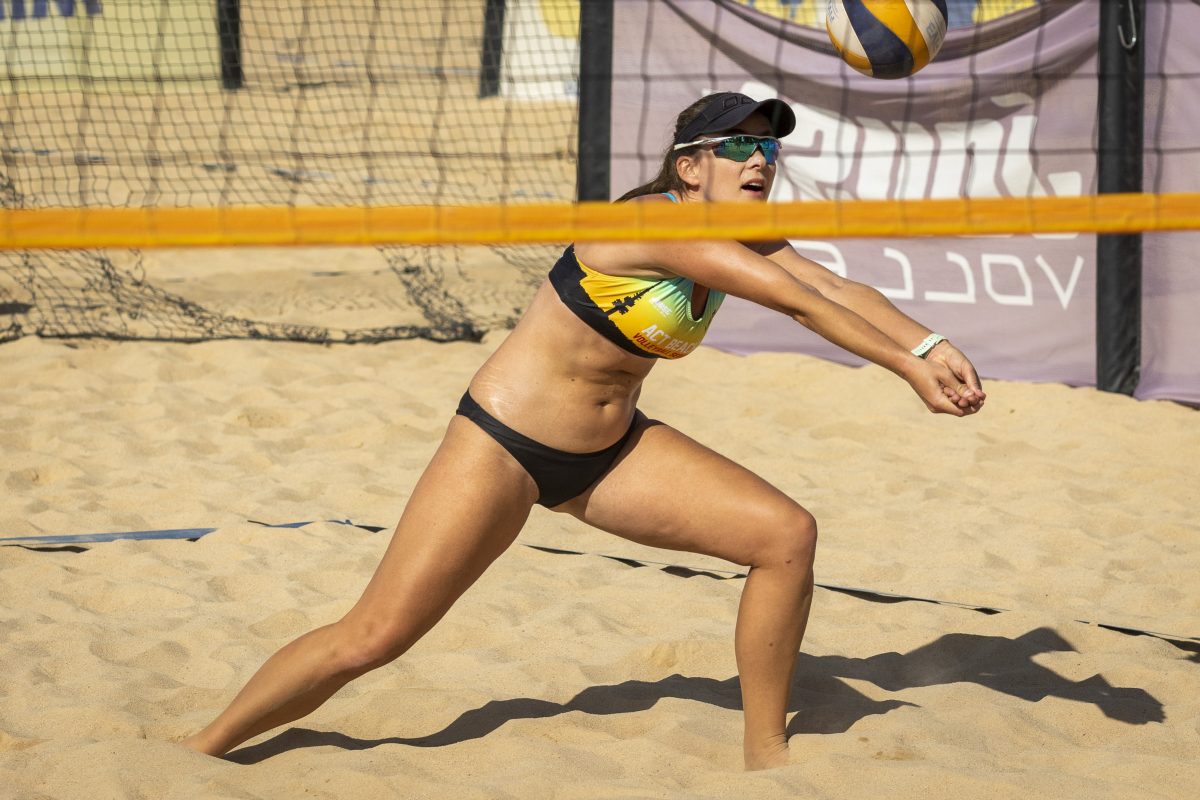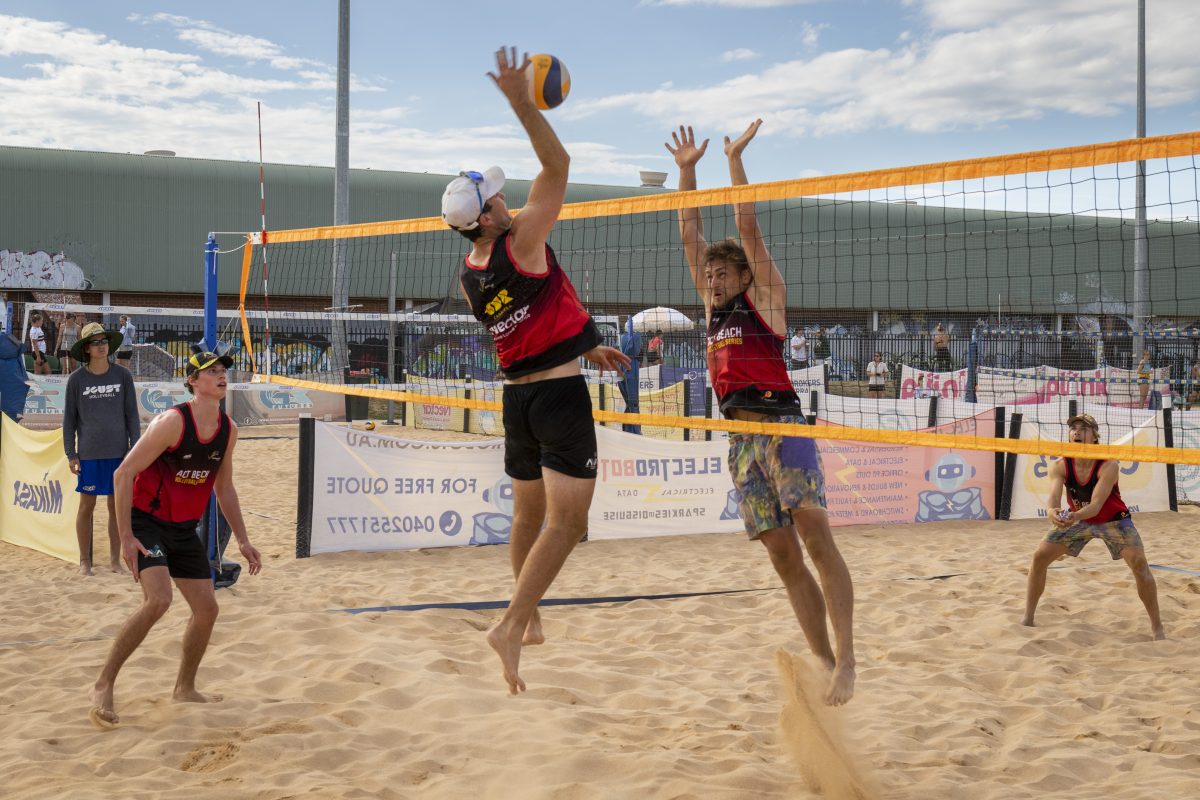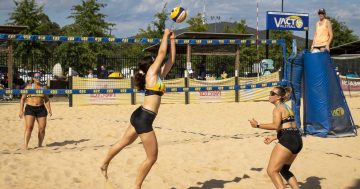
Beach volleyball players are given a maximum of three contacts to get the ball to their opponent’s side and score. Photo: Roy Meuronen Photography.
It’s a sport that could be described as an hour of soft sand sprints and jumps – a superior cardiovascular workout that would challenge even the fittest of the fit. Now, with the highly anticipated Paris Olympics fast approaching, beach volleyball will soon be on glorious display to the world.
With more than 200 countries associated with the Federation International de Volleyball (FIVB), stadiums around Europe, Asia and South America routinely fill up for beach volleyball events.
In Australia, despite spending less time in the limelight than the football codes, beach volleyball is one of the most popular sports by participation.
Aside from the country comfortably being one of the beach capitals of the world, there are many good reasons for this, according to Russell (Russ) Borgeaud.
The Women’s Indoor Volleyball head coach, Australian Volleyball Academy coach and Volleyball ACT life member says it’s a sport that can be enjoyed by a diverse crowd.
“Old-timers like myself can do it just for fun because it’s low-impact, being on the sand, but at an elite level, you get some really outstanding athletes who are, frankly, inspiring to watch,” he says.
“But really, it just brings us into the great outdoors, and in Canberra, in summer, it’s so enjoyable being out there.”

Beach volleyball is one of the most popular sports by participation in Australia. Photo: Roy Meuronen Photography.
Exciting and fast-paced, the primary objective of beach volleyball is to land the ball on your opponent’s side of the court, while keeping it off your own.
The rules of the game are fiendishly simple. Once the ball is served, each side gets a maximum of three contacts to send the ball back over the net and score a point. This sequence is called a “rally”.
The most common sequence of techniques used in a rally is often referred to as the “bump, set and spike” or “dig, set and attack”. It starts with an underarm pass made with the forearms, followed by an overhead pass made with the hands to “set” a team member up for the finish or “spike” – an overhead, one-handed, power-laden hit intended to catapult the ball at vicious speeds, ideally to an unprotected section of the opponent’s side.
“That final hit, usually you want it to be very aggressive, so players tend to jump up and ‘spike’ the ball. Those balls can travel in the vicinity of 100 km/h,” Russ says.
“You can imagine what it’s like being a defender and receiving a ball coming in at that speed. But the athletes go to great lengths to block the ball, and they get the bumps and bruises to prove it.”
Though the sport has long seen controversy around uniform requirements imposed on female players by the FIVB, including maximum width for bikini bottoms, Russ says these days regulations are more inclusive. Besides, it doesn’t take much to see the merits of the sport beyond the bikinis.
“The people who play competitive volleyball are incredible athletes,” he says. ”When you consider the strength and stamina it takes to play at that level, the power of the hits, the skill behind the defensive plays, the speed at which they move through the sand and the control on challenging terrain – it’s really quite amazing.”
Russ, who was assistant coach for the men’s indoor teams at the Olympics in Athens (2004) and London (2012), says this year’s Olympics will be a proud moment for Australia.
“The Australian women’s team that has qualified for the Olympics this year took out silver at the last Olympics. They’re a really strong team and I think a lot of people will want to watch their progress closely,” he says.
“This year we have two men’s teams as well. It’s the first time since Athens we’ve qualified two men’s teams, so it’s a significant achievement.”
Ready to try a bump, set and spike yourself? Contact Volleyball ACT.














